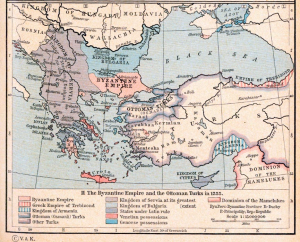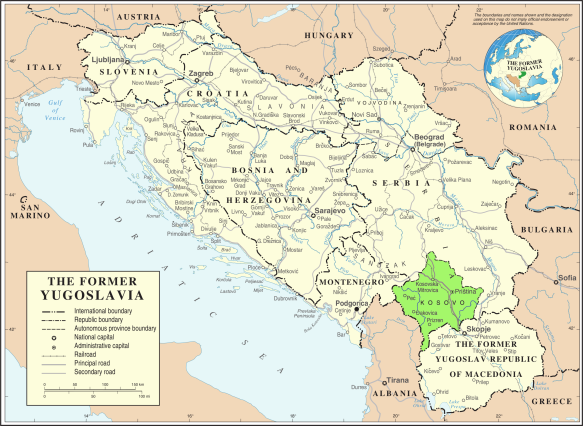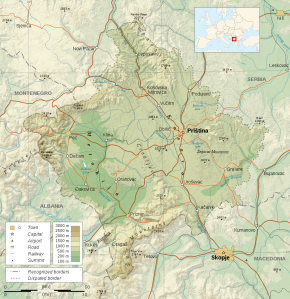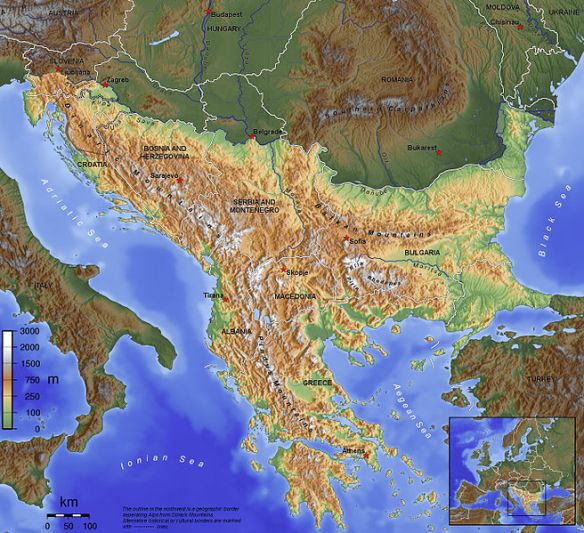March 2, 2012

Slavenka Drakulić, Zagreb, 27 Oct 09, by Goran Mehkek (Source: slavenkadrakulic.com)
Croatian journalist Slavenka Drakulić published S. A Novel about the Balkans in 1999, just seven years after Serbian forces rounded up Bosnian Muslims and moved them to concentration camps, where prisoners—women and girls, men and boys—suffered all manner of humiliation and abuse but especially “mass rape,” what Drakulić calls “the most horrifying means of humiliation….Rape is about power, about one group of soldiers sending a clear message of intimidation to another group” (Penguin Reader’s Guide, 8).
Yet this terrifying novel has a tender, some would say hopeful, ending, for the character S begins to rebuild her sense of humanity by finally accepting motherhood. Impregnated by her rapists, S initially loathes the infant growing inside her “like a tumour,” a “parasite” engendered by countless brutish ‘fathers’ (2, 178). But after a prisoner-exchange moves her from the “women’s room,” the site of the rapes, to a refugee camp in Zagreb, others’ acts of kindness gradually overcome her fear of a child conceived in rape.

Cover of Drakulić's S. A Novel about the Balkans
First, a Zagreb cousin houses her in her cramped apartment, freeing her from an infinitely less brutal but still dehumanizing ‘camp’ (149). Then in Stockholm, where S goes to have her baby, she stumbles across a school-mate, now a refugee worker, who houses S, gives her wholesome food and warm clothes, and tries to coax her away from her plan to give up her rape-child for adoption (170). Clearly, S needs such tenderness, for she continues to struggle with the “shame and guilt” (183) suffered by so many victims of rape. Longing to forget (175), S only hopes that some adoptive mother and father can give her baby what she can never provide, a “better past” (194).
But once her son arrives, S instinctively moves to cover the sleeping child. First she “recoils,” but when the child “closes his tiny fist around her extended finger,” S feels “utter tranquility” and melts into motherhood, determined to teach her boy that “hate” can be “transformed into love” (196, 197, 199).
Asked about this ostensibly hopeful conclusion to the novel, Drakulić denies that “this ending is so hopeful” (Guide 8), stressing instead the ambiguity. Accepting her child changes everything, presumably for the good, for S and her son, but how, Drakulic wonders, will S tell her son one day the “horror” of the “truth” about his fathers? And of course this union of mother and son changes nothing about the capacity of men to make other men rape their sons before shooting them both (109), to gang-rape a woman and then extinguish their cigarettes on their victim’s breast before urinating in her mouth (62, 78).
Yet the novel does unfold the reality of friendship, as noted above. It also portrays characters who perform life-endangering acts of kindness and courage, such as N, who works in the kitchen, smuggling warm bread and edible soup to the prisoners (92). Consistently, too, the novel traces S’s manipulative seductions of her abusers, including the camp Captain, acts of courage and intelligence that enable her to survive (97-102). All such actions–in this novel about victimization, helplessness—underscore choice and, as Drakulić puts it, our “moral responsibility,” our humanizing duty to take another’s hand (Guide 3).

Photo by Barrie Spence, Spence Photography, ©2011, used with permission.






